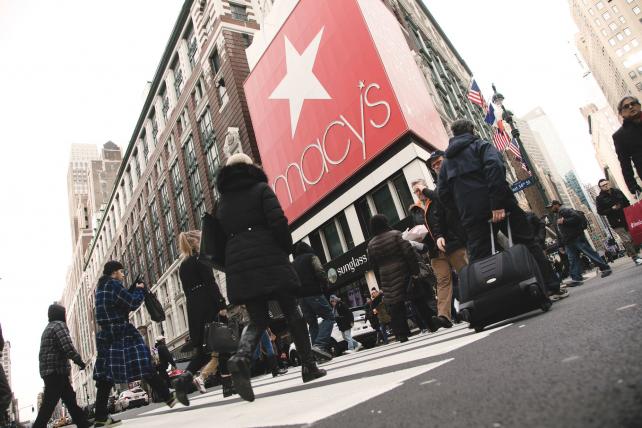Sara, a Manhattan psychotherapist, has shopped at Macy’s for most of her life. But her trips to the retailer’s Herald Square flagship store in Manhattan ended in October with the launch of #GrabYourWallet, an online campaign urging consumers to boycott companies that do business with President Donald Trump or members of his family.
“I don’t see any difference between Ivanka and Donald,” said Sara, who asked that her real name not be used to avoid having her political views intrude on her practice. “She is part of the problem.”
Not all of the store’s shoppers feel that way. “Macy’s, don’t pick sides!” one woman wrote recently on the retailer’s Facebook page. “Be the store for ALL people!”
The hypercompetitive retail industry has suddenly become hyperpartisan, as shoppers vote with their wallets. That leaves Macy’s in a difficult place. Offering a little something for everyone, the company has long been the quintessential midpriced department store. But the business has been struggling. Macy’s plans to lay off 10,000 workers and shut 65 of its 729 stores this year as part of a plan to close 100 of them. With consumers so divided over Trump, it seems that appealing to both red- and blue-state shoppers is no longer a winning formula.
But giving up its nonpartisan identity may not be so easy for Macy’s. While Nordstrom, its biggest rival, announced earlier this month that it would stop carrying Ivanka Trump clothing and accessories, Macy’s took no action. And that left neither side happy. Conservatives continue to deride the retailer for its decision to dump Donald Trump-brand merchandise in 2015, after the then-nominee made derogatory comments about Mexicans. Now liberals are equally outraged that the chain has yet to cut ties with merchandise bearing the name of his daughter.
“The politics of retail and the politics of branding have gotten a lot more complicated in the last month,” said Greg Portell, lead partner in the retail practice of consulting firm A.T. Kearney. “You have a president who is a brand and views himself as such. Anything that impacts the brand will trigger a response.”
Headquartered in New York and Cincinnati, the retail giant has been losing customers to Amazon and to smaller, more specialized chains, like H&M and T.J. Maxx. Amid the overall slowdown in apparel sales, Macy’s is reportedly considering selling itself to Canadian retailer Hudson’s Bay.
Now it finds itself in the crosshairs of boycotters on both sides of the Trump divide, highlighting the challenges of its longstanding strategy to be the brand for all Americans. Not only does Macy’s have a large number of stores, but it also has them in 45 states plus the District of Columbia, with as many in Texas as in New York.
“They’re in a very tough position and a lot harder a position than Nordstrom,” said Matt Sargent, a senior vice president at Frank N. Magid Associates. Nordstrom has 123 regular stores plus 215 Nordstrom Rack outlets, and most of them are in prosperous enclaves in the heartland and metropolitan areas on the coasts. The more upscale retailer’s clientele doesn’t expect the company to be all things to all people.
“Macy’s is speaking to a very broad populace, which is very, very polarized,” Sargent said. “Either direction they go regarding Ivanka is likely to land them in trouble.”
Macy’s also may not want to spark a repeat of the Twitter-lashing that it suffered when it dropped Trump’s products 18 months ago, prompting the then-candidate’s #BoycottMacys campaign.
As president, Trump denounced Nordstrom in an angry tweet that possibly drove a brief dip in the company’s stock price. But the Seattle-based retailer took care to insist that the decision was not personal — for the company, at least — regardless of how its customers may have felt about it. According to Slice Intelligence, which tracks digital purchasing trends, sales of Ivanka’s goods at nordstrom.com plunged 63% in the fourth quarter of 2016, one of several data points that backed up Nordstrom’s claim that the move was driven purely by poor sales.

